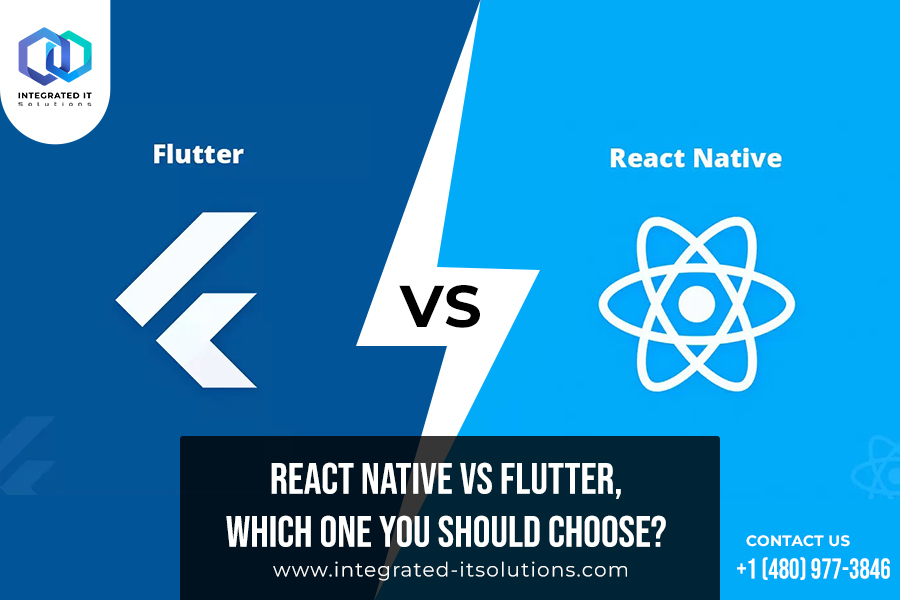Every company wishes to have an app available on both the app store and iOS. React Native and Flutter are now the most prominent cross-platform application development solutions for phone apps. However, you must select a technological stack before releasing your mobile application to the market. Which one is it? Flutter or React Native? Let’s see which one is worthwhile for your time and money.
Programming Language
Flutter is based on the Dart programming language, which was also created by Google. The language is regarded as a niche in the developer community, yet it is far from difficult. Learning Dart will be a breeze if you’ve worked with object-oriented programming before. While React Native is built on the JavaScript programming language. JavaScript has grown in popularity over time as a result of its simple learning curve and widespread use. If someone is familiar with JavaScript, they can go right into designing apps with React Native without wasting time learning the technology. As a result, we can state that React Native wins in terms of programming language because it is considerably easier to learn than Flutter.
Web Development Services
Flutter’s well-structured, thorough, and easy-to-understand documentation makes up for its infancy as a framework and niche language for development. The getting started guide includes detailed instructions on how to set up the IDE, create projects, and more. Flutter also comes with a command-line utility called Flutter Doctor, which walks the user through the entire configuration and setup process by displaying what has been installed and what still needs to be done. When it comes to structured documentation, React Native falls far short of Flutter.
Web Design vs Web Development
React Native and Flutter both have excellent graphical features, despite the fact that they draw UIs in radically different ways. The documentation for React Native is quite remarkable. Unfortunately, it’s geared for more experienced web developers who are already comfortable with JavaScript and have a few flaws. Furthermore, locating knowledge on how to create native libraries might be difficult. React Native incorporates menus, buttons, navigation, and other native graphic elements.
Flutter, unlike React Native, provides extensive documentation. It includes step-by-step instructions, as well as pictures and video demonstrations. The great thing about Flutter is that it comes with several tools to help you with app development. Using Flutter, the application would look the very same regardless of the device model or OS version. Unless the web developer actively modifies the navigation and elements, they will stay unchanged.
Architecture
Architecture is always a crucial consideration when making an educated decision on which development framework to use.
React Native communicates with native modules via the JavaScript Bridge, which results in slow performance.
Flutter is built on the Dart framework, which includes most of the necessary components. As a result, it’s bigger and doesn’t always need the bridge to connect with the native modules. In short, the Flutter engine is an ideal choice for app creation.
User Interface
React Native renders native components for each platform thanks to the JavaScript bridge. This functionality enables you to create authentic Android and iOS app looks and feel. The main benefit is that React Native comes with a large number of ready-to-use components to use as building blocks. However, there are disadvantages as well. Complex UI, for example, is difficult to duplicate in a React Native project. Also, depending on the platform, React Native components may behave differently.
Flutter comes with UI widgets pre-installed, making it simple to create native-like apps. There’s no need to look for third-party libraries; a large collection of foundation widgets will suffice. Flutter apps are also uniform across platforms.
Performance
As previously said, Flutter is written with the Dart programming language, which enables faster code compilation than JavaScript. Flutter also immediately exhibits animations at 60 frames per second due to this. Flutter also suggests limiting build costs, only employing effects and widgets when absolutely necessary, using lazy methods for grids and lists, and generating and showing frames in 16 milliseconds.
React is written in Native and JavaScript. For apps, demonstrating a high level of performance isn’t enough. As a result, to get the desired impact, developers must combine additional interactions with native ones. When it comes to web development, many developers agree that Flutter is the best option.
Features and API Components
In the case of Flutter, the API contains everything required to access these native functionalities. UI rendering components, device API access, navigation, testing, stateful management, and a slew of libraries are all included in the framework. If you choose Flutter as your framework, you will be able to discover everything you require without having to rely on third-party programs.
When it comes to functionality and API components, React Native offers the bare minimum. A developer is only given UI rendering and device access modules with React Native. React Native is primarily reliant on third-party libraries and modules for native functionalities. When it comes to features and API, Flutter is undoubtedly the winner.
Testing
Testing an application thoroughly on all fronts is critical to its success. When a framework includes built-in testing modules and libraries, the job becomes much easier to manage and execute.
Flutter, as the more feature-rich of the two frameworks, also includes testing modules. Unit testing, widget testing, and integration testing are all aided by this. When it comes to testing, React Native is limited. Through JavaScript frameworks, it supports a few unit testing functionalities, and snapshot testing may be done with tools like Jest. Programs built using React Native significantly rely on third-party applications like Appium for different types of testing.
Each framework (React Native and Flutter) has its own set of advantages and disadvantages. And each one is a fantastic answer for a different issue. Flutter is expected to cause a revolution in the mobile app development market, according to many industry analysts. However, we are here to assist you if you’re still confused. We are a web design and development company that offers web development services in Clarkston. We offer Back end development, Front End Development, Full-Stack web development services, and Web design and development services. So get in touch with us, and we’ll help you select the most appropriate mobile app solution for your venture.
FAQs
Which programming language is used for React Native and Flutter?
Flutter uses Dart, a less popular but powerful programming language created by Google. React Native is based on JavaScript, one of the most widely used programming languages worldwide.
How do React Native and Flutter handle UI rendering?
React Native uses native components and the JavaScript bridge to render UI, which can result in authentic platform-specific looks. Flutter, on the other hand, comes with a comprehensive set of pre-designed widgets for a consistent and visually appealing UI across all platforms.
Can I use React Native and Flutter for both iOS and Android development?
Yes, both frameworks are designed for cross-platform development, allowing you to build applications for both iOS and Android from a single codebase
How do I decide between React Native and Flutter for developing a digital marketing app?
Consider your team’s expertise, the specific requirements of your digital marketing app, and the development experience provided by each framework. Both React Native and Flutter have their pros and cons, and the right choice will depend on your app’s goals and the resources available to you.




